A world-renowned fossil expert says he is greatly concerned about a proposed restructure at Te Papa, as it could affect the number of staff employed to look after its internationally important natural history collections.
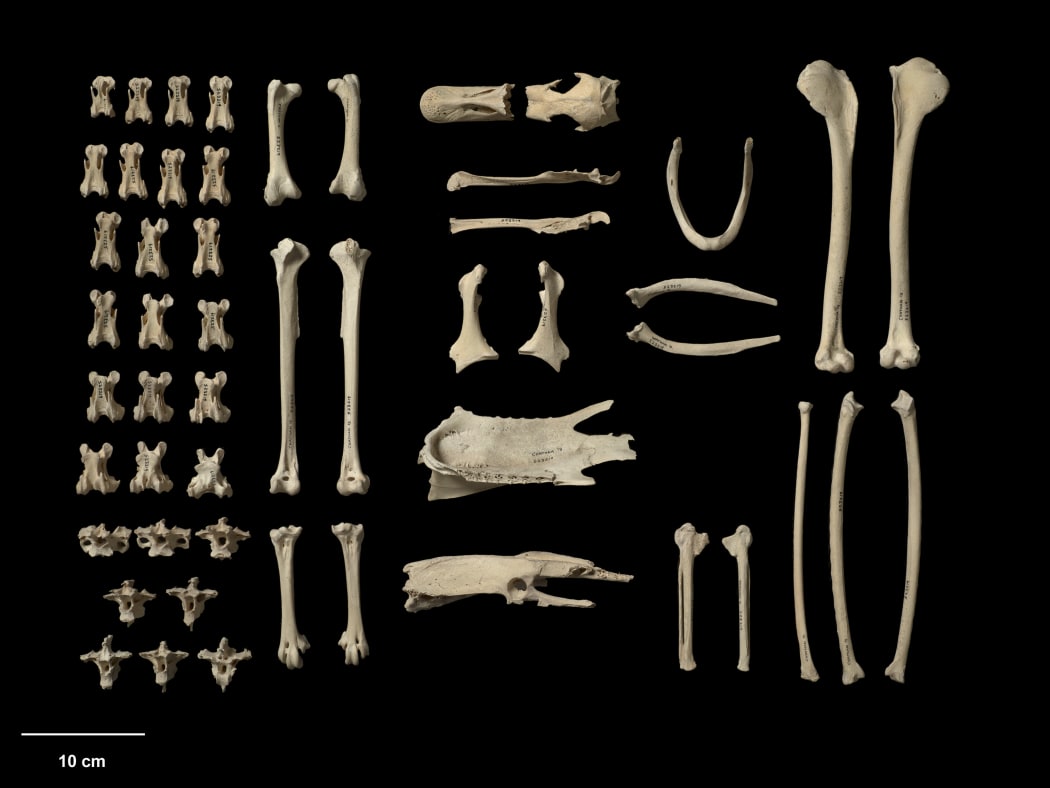
New Zealand once had its own species of black swan, described as having the physique of a rugby player. Photo: Jean-Claude Stahl / Museum of New Zealand Te Papa Tongarewa
Subscribe to Our Changing World for free on Apple Podcasts, Spotify, Stitcher, RadioPublic or wherever you listen to your podcasts
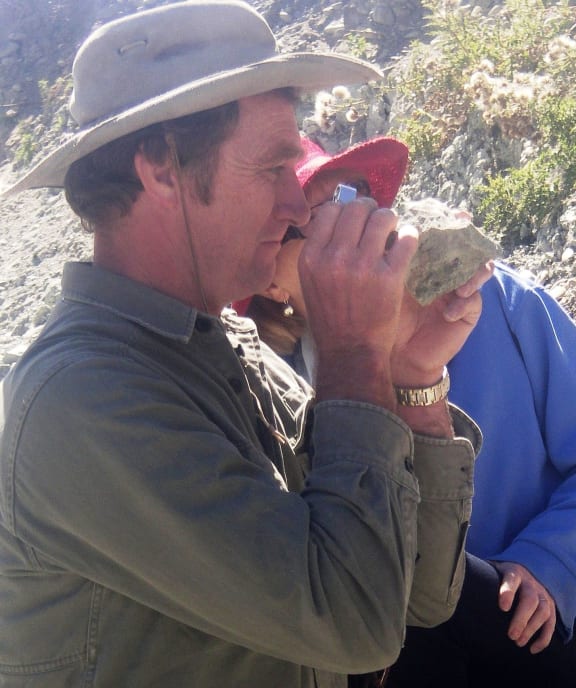
Trevor Worthy inspects a small animal bone embedded in a piece of rock. Photo: RNZ / Alison Ballance
Associate Professor Trevor Worthy is a New Zealand palaeontologist who works at Flinders University in Australia. His concerns add to a growing disquiet in the New Zealand scientific community about proposed job cuts at New Zealand’s National Museum Te Papa Tongarewa.
Last week, former Manager of Collection Services at Te Papa Dr Mike Rudge told Kathryn Ryan on RNZ’s Nine to Noon that “job cuts at our national museum will seriously compromise the collections".
Dr Worthy understands that the current restructure proposal may see the number of collection managers cut to just three for all the natural history collections, which include more than a million specimens of fishes, marine mammals, insects, spiders, birds, fossils and plants.
He says that if this is the case, “it is cutting an already skeleton crew to essentially an absolutely critical skeleton crew that wouldn’t be able to manage the collections".
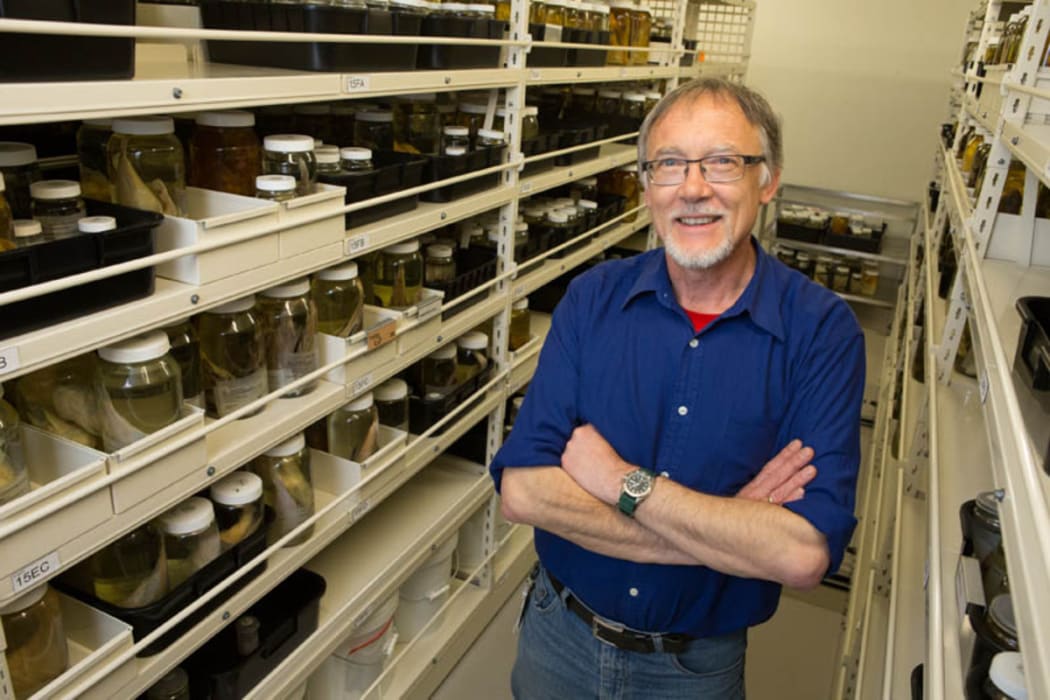
Andrew Stewart, Collection Manager of Sciences at Te Papa Photo: Te Papa/Norm Heke
“It appears to be an ongoing denigration, because we’ve already lost significant numbers of managers to the collections.”
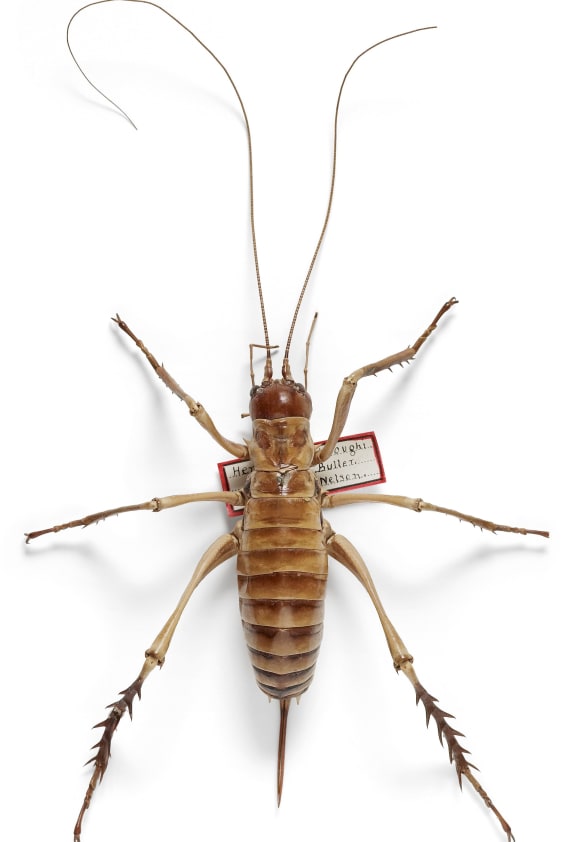
Hemideina broughi (Buller,1896) Photo: Te Papa
There have been a number of restructures at Te Papa, including recent ones in 2013 and 2015.
“In the 35 years that I’ve been associated with the collections,” says Dr Worthy, “we’ve lost approaching half of the actual workers. And by that I mean the collection managers and the curators who managed and made those collections.”
He cites the previous loss of experts in crustaceans, mammals and echinoderms, and says “we don’t have any of those now in Te Papa".
Dr Worthy says the main users of Te Papa’s national collections are external experts, from New Zealand and overseas, and he is angered at the lack of outside consultation about the proposed restructure.
“I think it’s incredibly arrogant on the behalf of the current board and its director to consider [outside users] have no right to be involved in a consultation.”
The importance of Te Papa's collections
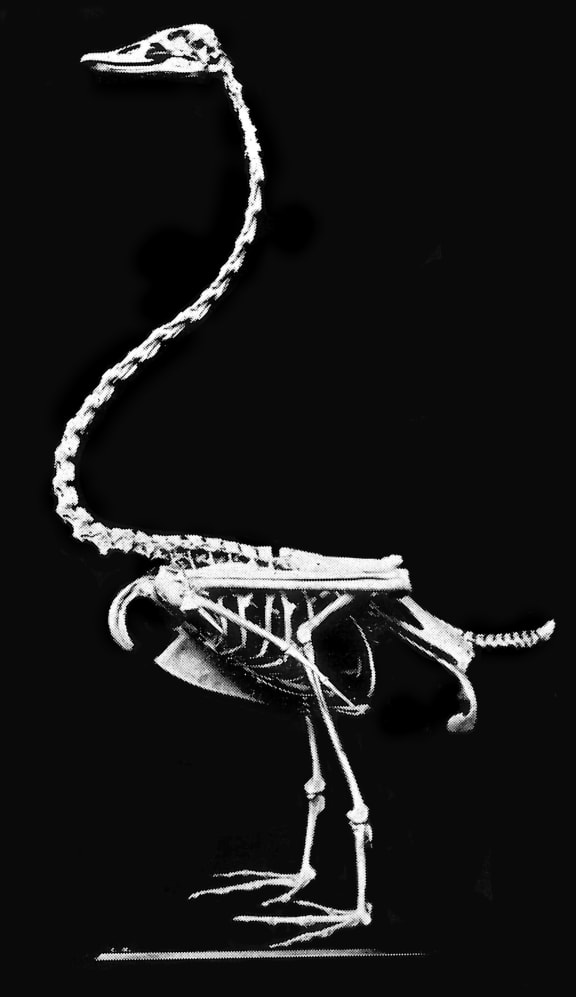
The mounted bones of an extinct poūwa. Photo: Museum of New Zealand Te Papa Tongarewa
Dr Worthy says Te Papa’s natural history collections are important because they underpin our understanding of the biodiversity of New Zealand and its Pacific neighbours.
“They form a resource for all future researchers, not just in New Zealand, but globally.”
Dr Worthy says the collections need to be properly curated and managed, and it's important that collections are not static – “they have to grow".
He says we are in the middle of a dramatic extinction event.
“The biota around is being completely altered beyond recognition and it should be the function of a national collection to be gaining specimens of that biota and preserving them.”
Dr Worthy points out that changing technologies are allowing researchers to use collections in ways that were once unimaginable.
This week, for example, Our Changing World features a recently published collaboration between archaeologists, fossil experts (including Te Papa’s Alan Tennyson) and ancient DNA experts that has produced DNA barcodes to identify previously unrecognisable small bone fragments held in collections around the country, including Te Papa.
This study has added greatly to our understanding of the range of species hunted and eaten by early Māori, and has also identified significant early genetic losses in species such as kākāpō.
It adds to a growing body of information about early New Zealand biota, which builds on specimens held in natural history collections, including Te Papa’s collections.
Splitting the natural history collection
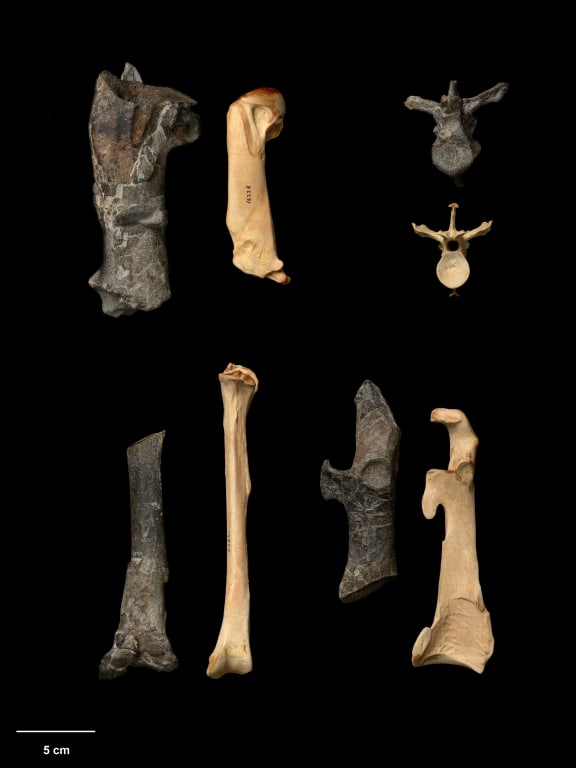
Partial bones of the new colossal fossil penguin (black) compared with those of an emperor penguin (pale). Clockwise from top left: humeri, vertebrae, coracoids, tibiotarsi. Photo: Supplied / Te Papa / Jean-Claude Stahl
In an interview last week with Kathryn Ryan, Te Papa chief executive Geraint Martin said there had been early discussions about the possibility of the Te Papa fish collection going to NIWA.
In response to this, Dr Worthy is adamant that all the collections should remain with Te Papa.
“These collections are the national collection for New Zealand’s natural history. They are vested in the museum by an Act of Parliament to be looked after for the people of New Zealand.”
“If you give away a part of one of those collections to a [Crown Research Institute] you are essentially giving it to a private organisation. Those organisations have no Act of Parliament, no legal responsibility to maintain such collections.”
“They might take them today but there would be absolutely nothing stopping them throwing it out tomorrow.”
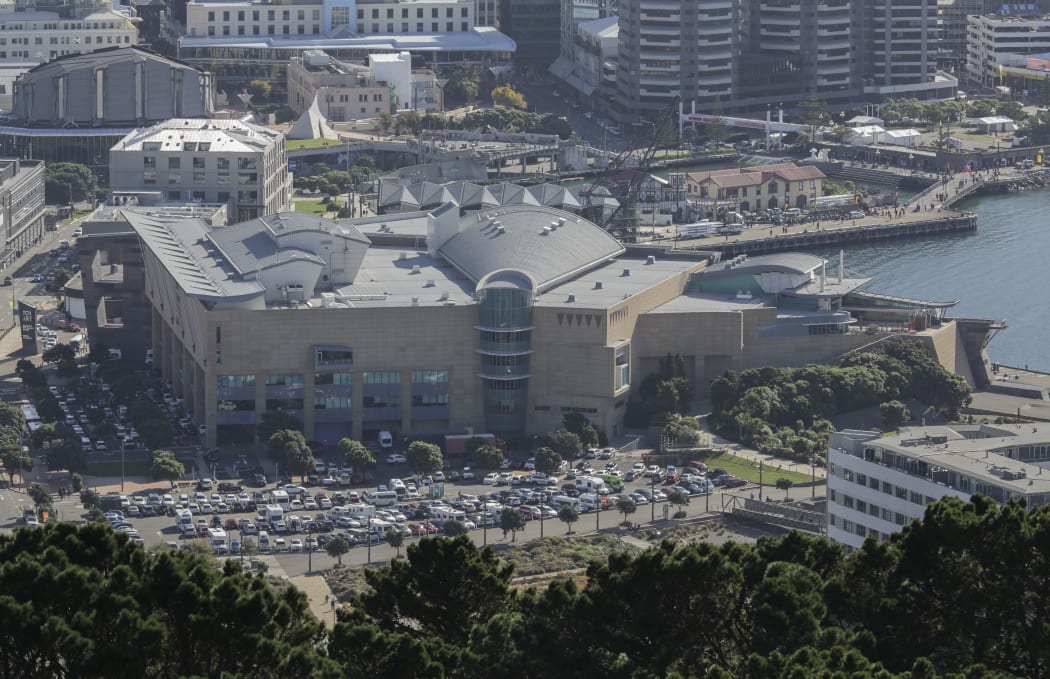
Photo: RNZ / Richard Tindiller
Proposal to move Te Papa’s collections to Auckland
Media reports say that the suggestion of moving Te Papa’s collections to a satellite museum in South Auckland, first mooted in 2015, is also back on the table. Auckland is more seismically stable than Wellington, although Dr Worthy says the natural history collections facility in central Wellington is well designed to withstand large earthquakes.
Dr Worthy says he is not in principle opposed to the idea of museums having some of the collection off site.
He is, however, concerned about specimens being damaged in transit and says it is vital that the experienced curators and collection managers who intimately know the collections stay with them.
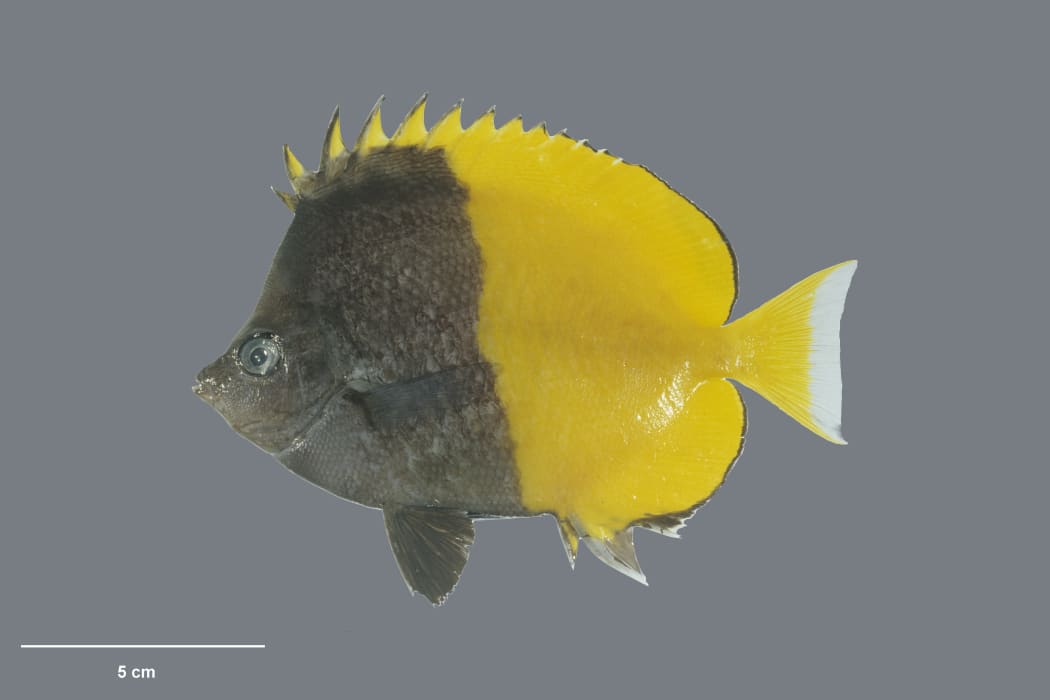
Smith’s butterflyfish (Chaetodon smithi - Randall, 1975, collected 15 May 1994, Ducie Island, Pitcairn Group, Pitcairn) Photo: CC BY-NC-ND / Te Papa (P.031400)
Te Papa’s collections

Fossil Iguanodon tooth, circa 132-137 million years ago. Gift of the Mantell Family to Te Papa, Wellington Photo: Te Papa
Te Papa is home to a number of internationally significant collections, including art, mātaraunga Māori and Pacific, as well as natural history.
There are more than 2.2 million items in Te Papa’s collections, half of which are in the natural history collections. These include vertebrates (birds, marine mammals etc.), invertebrates, fossil and plants.
The natural history collection includes specimens collected on captain James Cook’s expeditions to New Zealand in the late 1700s.
Dr Worthy has personally lodged tens of thousands of specimens of fossils and molluscs from New Zealand and the Pacific in Te Papa’s collections, including many from the renowned Miocene fossil site at St Bathans in Central Otago.
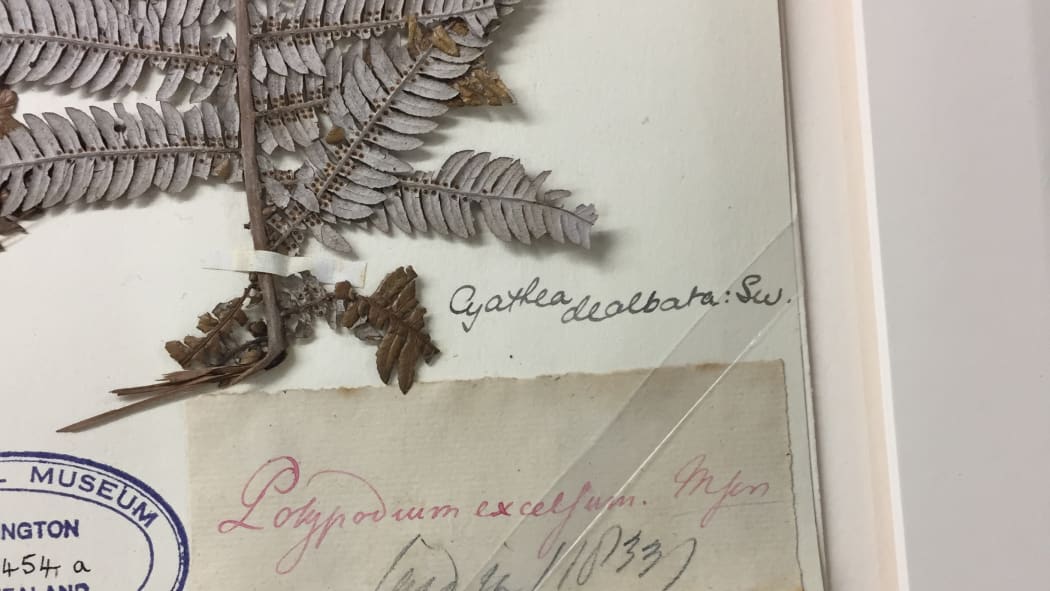
Silver fern collected by Joseph Banks and Daniel Solander, Endeavour 1769. Te Papa 2017 Photo: Noelle McCarthy/RNZ
In its 2017 annual report, Te Papa valued these irreplaceable collections at $869 million. The natural history collection alone is valued at $133 million.
The Museum of New Zealand Te Papa Tongarewa Act 1992 makes it clear that collecting, maintaining and growing collections is the core function of the museum.
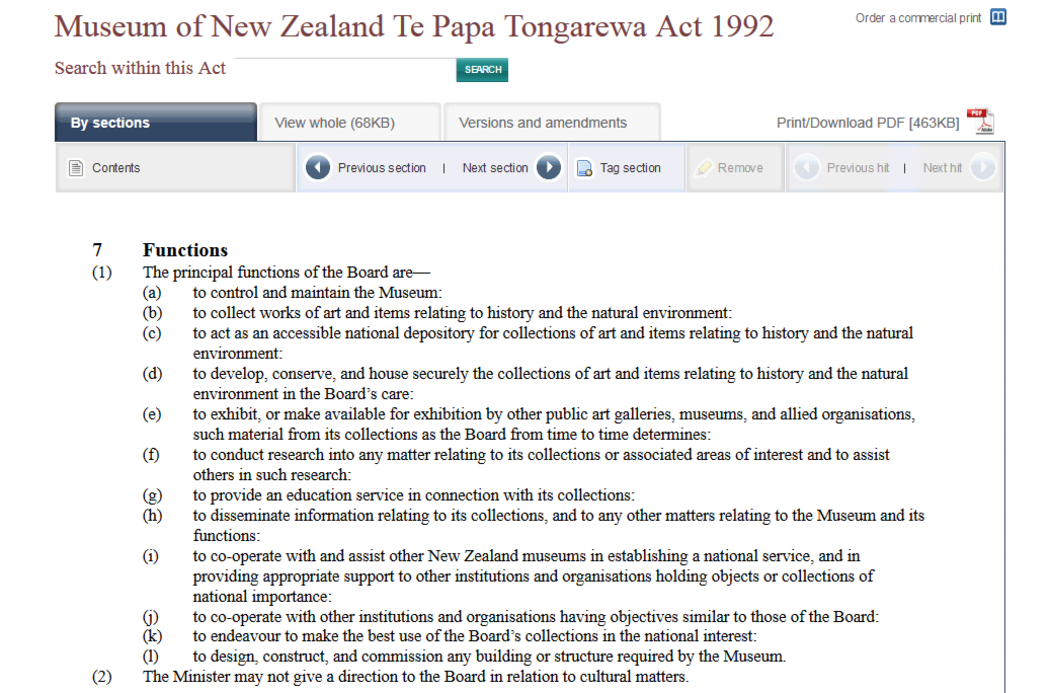
Photo: Museum of New Zealand Te Papa Tongarewa Act 1992
Royal Society report on New Zealand’s biological collections
Biological collections are a treasure trove of information about our natural world. There are 29 major taxonomic collections in New Zealand held in various institutions, including museums, universities and crown research institutes. Together they contain over 12 million specimen lots – some of which contain many individual items - including vertebrates, invertebrates, plants, fungi, micro-organisms, and fossils.
In late 2015, the Royal Society Te Apārangi produced a report on National Taxonomic Collections in New Zealand which raised concerns about their uncertain future. They cited problems due to short-term funding, fragmented and uncoordinated management, lack of legal protection, and a small and aging pool of experts with the knowledge to both use and look after them.
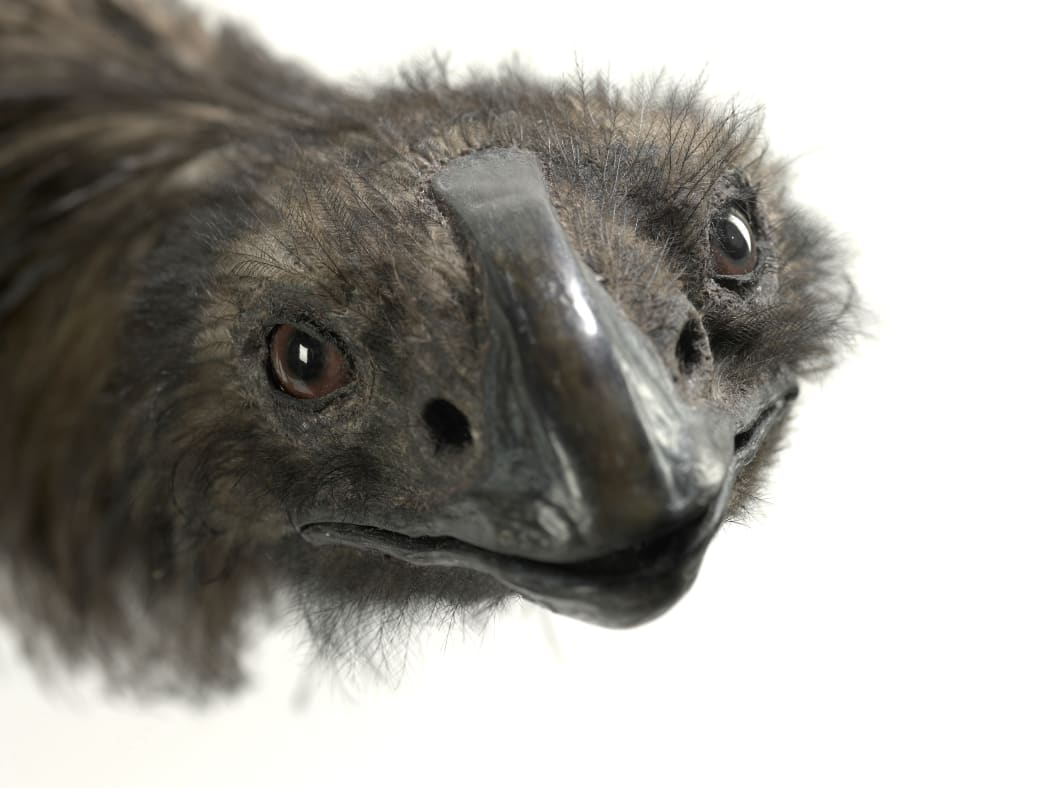
Coastal Moa specimen from Te Papa Photo: CC BY NC ND Te Papa (S.044281)


